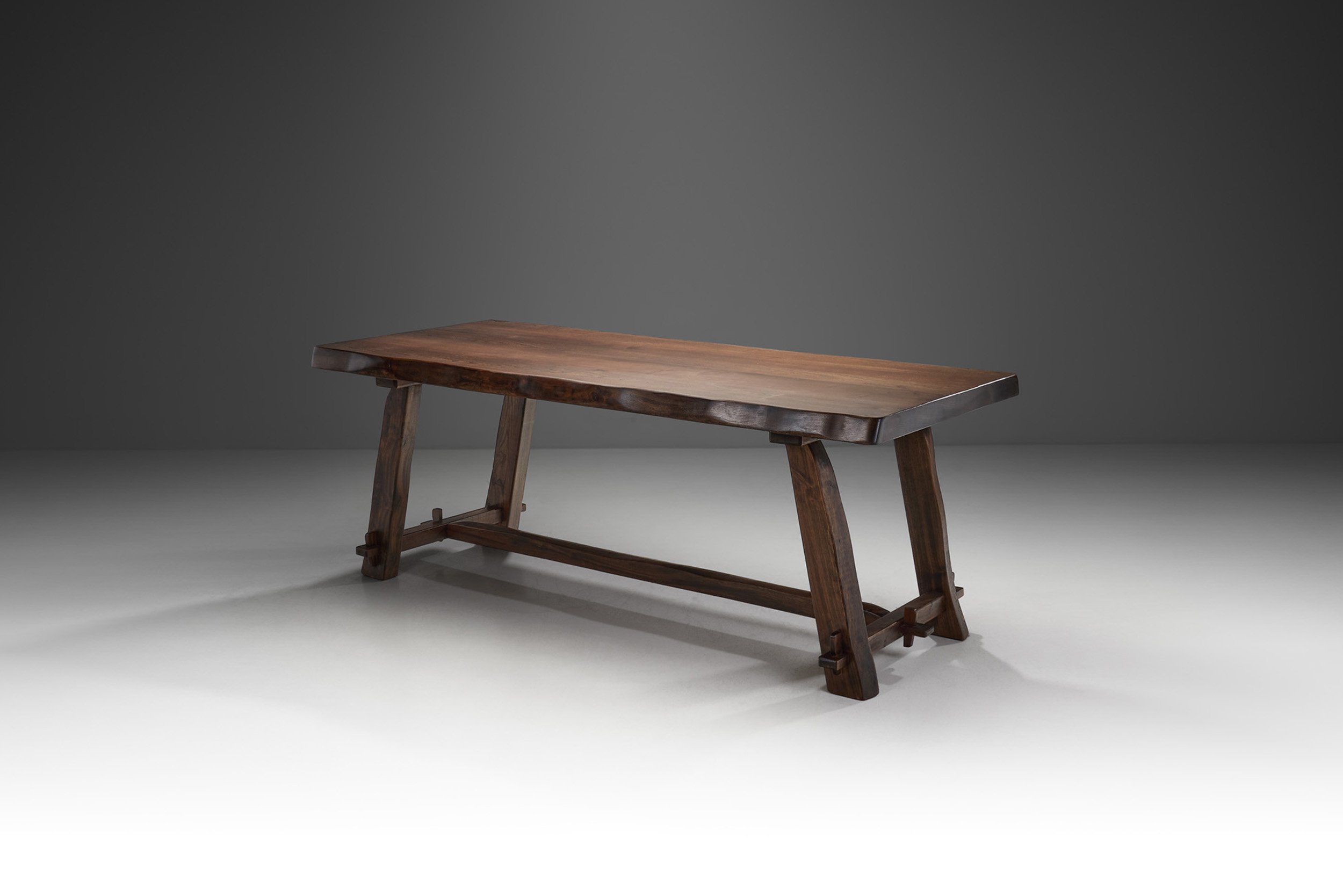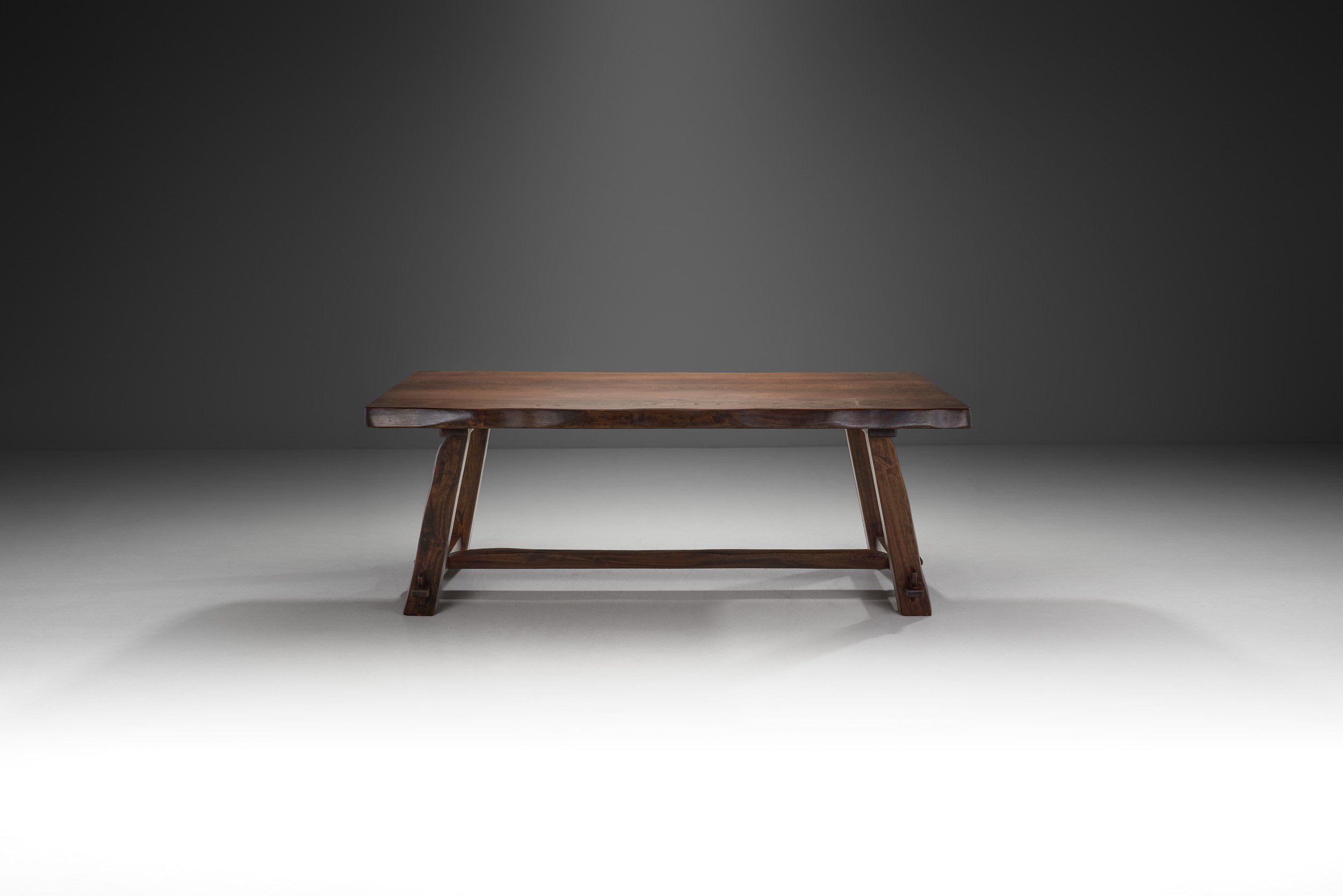Brutalist Oak Dining Table, Europe 1960s (sold)















Brutalist Oak Dining Table, Europe 1960s (sold)
In the realm of furniture design, the 1960s witnessed the emergence of the Brutalist movement, a style that embraced raw, rugged aesthetics and celebrated the inherent qualities of materials, especially wood. A quintessential example of this era is this Brutalist oak dining table, an exemplar of sturdy functionality and intricate craftsmanship.
Crafted from solid oak, this dining table stands as a testament to the Brutalist ethos, eschewing loud embellishments in favour of a stark, unadorned appearance. The natural texture of the oak, left largely untreated, adds to the table's robust character. What distinguishes this piece is its extendable top, a pragmatic feature reflecting the movement's inclination towards practicality and versatility. The base of the table is a marvel of fine detailing, showcasing small carved ornaments that underscore the artisan's dedication to craftsmanship. Functional wedge joints, a hallmark of Brutalist design, contribute not only to the table's stability but also serve as aesthetic elements, blending seamlessly with the overall organic appeal. Brutalism, as an architectural and design movement, emerged in the mid-20th century, responding to a desire for authenticity and a rejection of ornamental excess. Furniture design within this movement embraced the use of robust materials like oak, embodying the ethos of honesty in both materials and forms. Oak, with its durability and distinctive grain pattern, became a favoured choice, reflecting the Brutalist philosophy of celebrating the innate qualities of materials. The cross stretchers connecting the legs of the dining table add a structural dynamic to the piece. This design element not only enhances the table's stability but also contributes to the visual impact of the base. The round table-top, another characteristic feature of Brutalist furniture, eschews traditional rectangular forms, offering a departure from conventional design norms.Still, one cannot overlook and appreciate the meticulous joinery that characterizes the construction of this Brutalist oak dining table. The craftsmanship involved in creating seamless connections between elements underscores the movement's commitment to precision and attention to detail. The joinery serves both functional and aesthetic purposes, reinforcing the overall integrity of the piece.
As an enduring representation of Brutalist ideals, this dining table encapsulates the movement's emphasis on functionality, honesty in materials, and a rejection of unnecessary embellishments. In a world of fleeting trends, the enduring appeal of Brutalist furniture, especially exemplified in oak creations from the 1960s, continues to resonate with those who appreciate the beauty in simplicity and the authenticity of raw, unadulterated design. With an extendable table-top. This incredibly sturdy table in solid oak is a highly functional piece with an equally arresting aesthetic dimension supported by exceptional wedge joints.
SOLD
Condition:
In good vintage condition. Wear consistent with age and use. Some marks and scratches on the patinated oak.
Dimensions:
51.18 in ⌀ x 30.51 in H
130 cm ⌀ x 77.5 cm H
With extensions:
69.69 in W x 51.18 in D x 30.51 in H
177 cm W x 130 cm D x 77.5 cm H

















